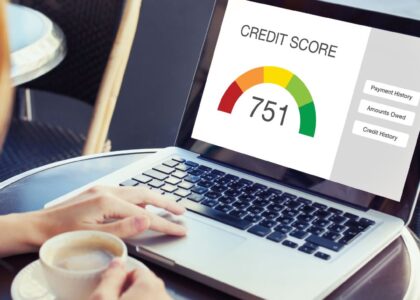Your FICO score is a crucial number that can greatly impact your financial well-being. Whether you’re applying for a loan, renting an apartment, or seeking credit card approval, having a good credit score is essential. In this article, we will answer common questions about FICO scores and provide insights into obtaining, understanding, and improving your credit score.
How Can I Get My True FICO Score for Free?
Obtaining your true FICO score for free can be a bit challenging. While there are many websites and services claiming to provide free credit scores, most of them offer alternative scoring models, not the FICO score itself. However, some financial institutions or credit card companies offer free access to your FICO score as a customer benefit. Additionally, you may check with your bank or credit union to see if they provide FICO score access. Alternatively, you can purchase your FICO score directly from the official FICO website.
How Do I Find Out My FICO Score?
To find out your FICO score, you have several options:
- Credit Card Companies: Some credit card companies provide access to your FICO score as part of their services.
- FICO Website: You can purchase your FICO score directly from the official FICO website.
- Credit Reporting Agencies: Equifax, Experian, and TransUnion are the three major credit reporting agencies. They offer FICO score access, typically for a fee.
- Financial Institutions: Check if your bank or credit union provides free FICO score access.
Remember, it’s essential to review your credit report regularly to identify any errors or discrepancies that could impact your FICO score.
What Is the Difference Between FICO Score vs Credit Score?
The terms “FICO score” and “credit score” are often used interchangeably, but it’s important to note that FICO is a specific brand of credit scoring model. FICO scores are widely used by lenders and are based on the data in your credit reports from the three major credit bureaus. On the other hand, credit scores are a more general term that can refer to various scoring models, including FICO scores and other alternative models like VantageScore.
What Is a Good FICO Score?
FICO scores range from 300 to 850, and a higher score generally indicates better creditworthiness. While the definition of a “good” FICO score may vary depending on the specific lender or type of credit, a FICO score above 670 is generally considered good. However, it’s important to note that lenders may have different criteria and thresholds when determining creditworthiness.
What Is Considered a Bad FICO Score?
A FICO score below 580 is often considered a poor credit score. With such a score, individuals may
face challenges when applying for credit or loans. It’s important to note that having a low FICO score doesn’t mean you won’t be able to secure credit, but it may result in higher interest rates or limited options.
How to Get a 900 Credit Score
Achieving a perfect 900 FICO score is a rare feat, but there are steps you can take to improve your credit score:
- Pay Bills on Time: Payment history is a significant factor in calculating your FICO score. Make sure to pay all your bills, including credit card balances, loans, and utilities, on time.
- Reduce Credit Card Balances: Keep your credit card balances low relative to your credit limit. Aim to use no more than 30% of your available credit.
- Keep Old Accounts Open: The length of your credit history is important. If you have older credit accounts with a good payment history, keep them open to demonstrate your creditworthiness.
- Diversify Your Credit Mix: Having a mix of credit types, such as credit cards, installment loans, and mortgages, can positively impact your score. However, only take on credit that you can manage responsibly.
- Regularly Check Your Credit Report: Monitor your credit report for errors or fraudulent activity. Dispute any inaccuracies promptly to maintain a healthy credit profile.
Remember, improving your credit score takes time and responsible financial behavior. Be patient and consistent in your efforts, and over time, you can see significant improvements in your FICO score.
What Is the Lowest Good FICO Score?
While there isn’t an exact threshold for the “lowest” good FICO score, a score above 670 is generally considered good. However, keep in mind that each lender may have its own criteria for evaluating creditworthiness. It’s best to strive for a FICO score that falls within the good to excellent range, as it increases your chances of obtaining favorable credit terms and interest rates.
Understanding your FICO score is essential for managing your financial health. Although obtaining your true FICO score for free can be challenging, there are options available through credit card companies, financial institutions, and credit reporting agencies. While Credit Karma does not provide FICO scores, it offers alternative scoring models that can still provide valuable insights.
Remember that a good FICO score indicates better creditworthiness and increases your chances of securing credit on favorable terms. Take steps to improve your credit by paying bills on time, reducing credit card balances, and maintaining a diverse credit mix. Regularly monitoring your credit report is crucial for identifying and resolving any inaccuracies.
By staying proactive and responsible with your credit, you can build a solid financial foundation and achieve your long-term financial goals.





